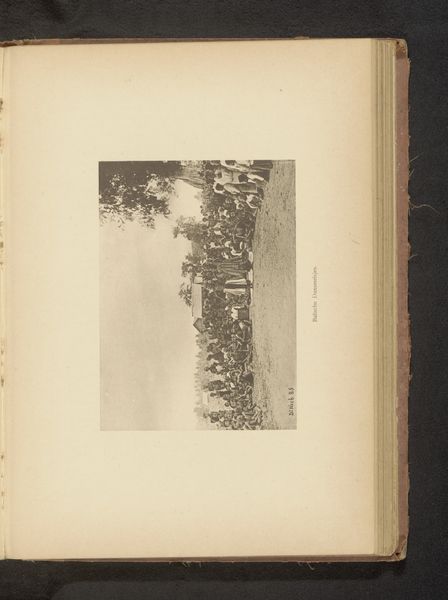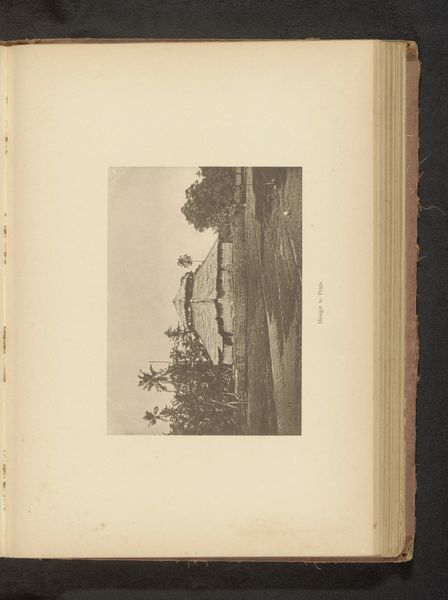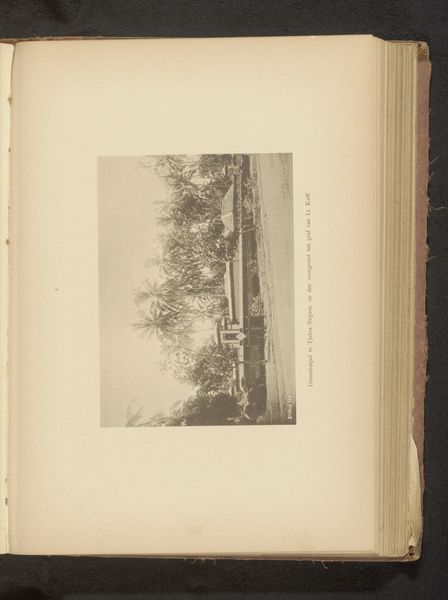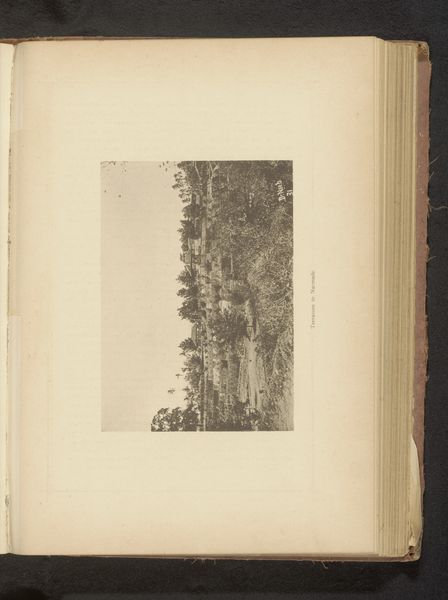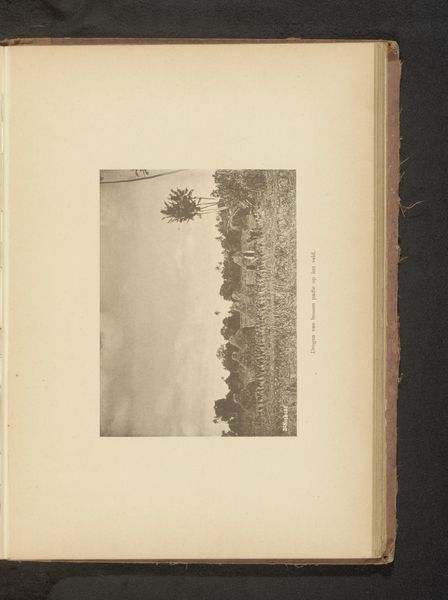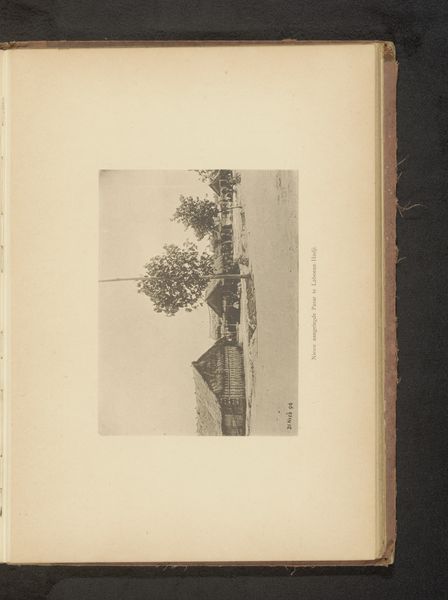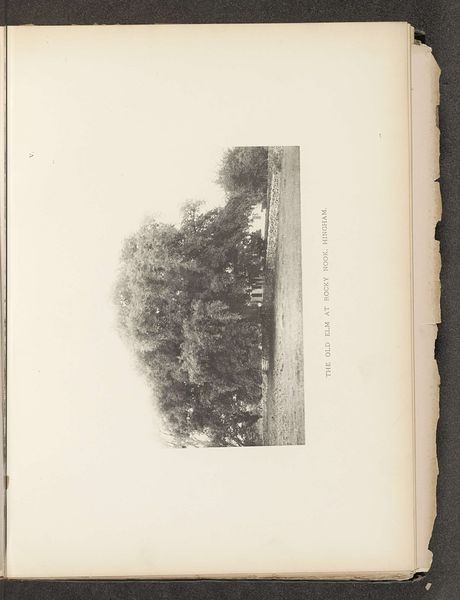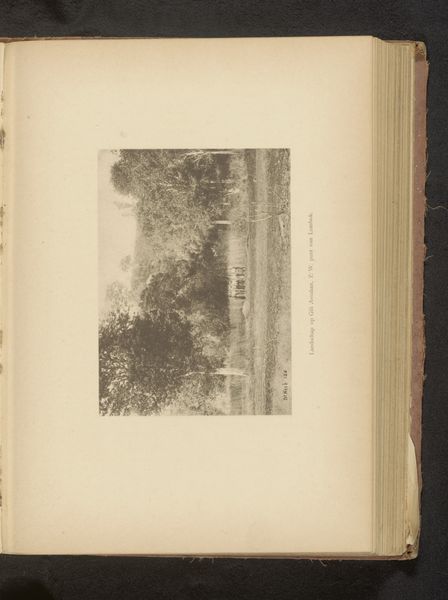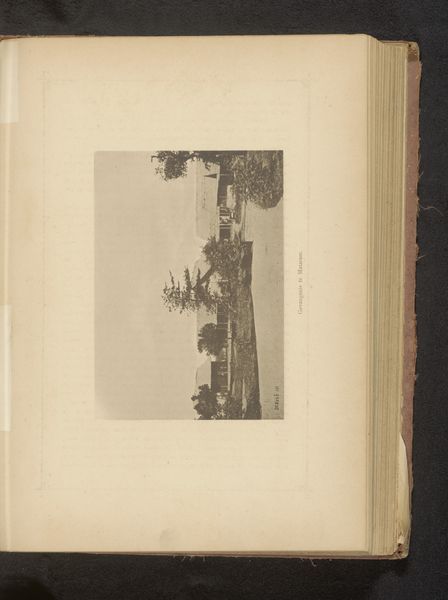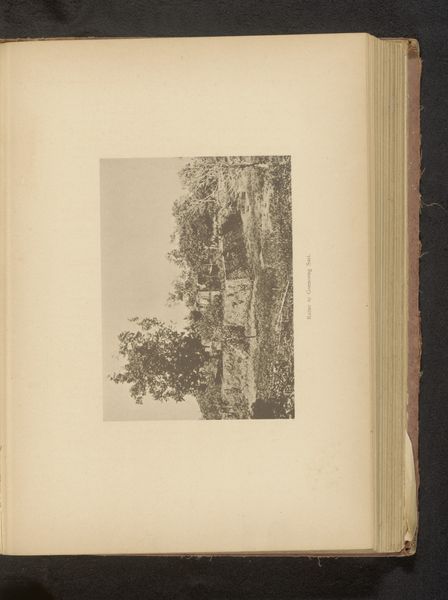
print, photography
#
still-life-photography
#
dutch-golden-age
# print
#
landscape
#
photography
Dimensions: height 120 mm, width 165 mm
Copyright: Rijks Museum: Open Domain
Curator: This photograph, titled "Gezicht op een havenkantoor tussen bomen," or "View of a Harbour Office Between Trees," was taken by Christiaan Johan Neeb sometime before 1897. Editor: It has such a melancholic air, doesn’t it? The subdued tones create this almost dreamlike state. The composition—how the building is shrouded by trees, how still everything appears, gives one the sense that they're viewing a memory, and perhaps one that has already started to fade. Curator: Absolutely. I see the photograph carrying layers of symbolism, typical for the visual culture of its time. The obscured harbor office itself might symbolize the hidden machinations of trade and power in the Dutch colonies. Do you read it similarly in terms of material politics? Editor: Certainly. Considering this print's landscape style, one can almost see it being reproduced in large quantities and circulated amongst settlers eager to project this idyllic life far from home. The act of capturing and distributing such images speaks volumes of colonial practices of exploiting both resources and image construction to normalize their dominance. The physical print is as much a commodity as spices or rubber from that region. Curator: Yes, indeed, consider the implied narrative of colonial endeavor and economic ambitions interwoven in the subject matter. What this depicts can resonate deeply if you consider the era, and its echoes continue to influence current cultural psychology regarding colonial enterprise. Editor: Also consider that it’s photography! In comparison with painting, it carries a peculiar supposed sense of authenticity that naturalizes the scene being photographed. Curator: Exactly! Through Neeb's lens, we see both the reality and a carefully constructed visual representation that embodies certain ideological aims prevalent in Dutch colonial history. This blending gives us profound insights into not only how these environments appeared, but also their impact in crafting cultural consciousness concerning colonialism’s reach. Editor: Analyzing these colonial-era materials reveals much about systems of production, distribution and visual consumption embedded within these objects. Curator: Looking back, Neeb’s "Gezicht op een havenkantoor tussen bomen" speaks both volumes in terms of colonial history, yet gives us space to rethink how images like these continue shaping collective thought surrounding imperialism's lingering legacy today. Editor: Absolutely. Reflecting on process reveals colonial photography was an integral means by which narratives and justifications spread concerning overseas activities during a time now so fraught.
Comments
No comments
Be the first to comment and join the conversation on the ultimate creative platform.
